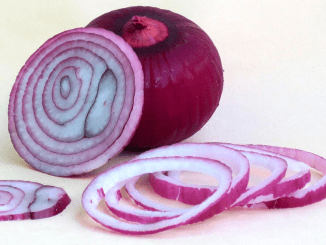Sometimes, the most innocent questions from children can unlock surprising truths about the world around us. Recently, during a quiet afternoon at home, my 5-year-old grandson asked me something that caught me completely off guard:
“Why is toilet paper always white?”
At first, I chuckled. But then I realized — I didn’t have a good answer.
Like many of you, I’ve used white toilet paper my entire life without giving it much thought. But my grandson’s curiosity pushed me to take a deeper look. And what I found turned out to be far more fascinating than I ever expected.
A Simple Question from a Young Mind
Children notice details that adults overlook. To my grandson, the world is full of color — vibrant books, red fire trucks, green apples, blue blankets. But in the bathroom? Toilet paper is always white. And that didn’t sit right with him.
“Why not blue or yellow?” he asked, eyes wide with wonder. “Everything else has color.”
That’s when I realized — he had a point.
So, I set out to find the answer. And along the way, I uncovered the history, science, and even psychology behind one of the most overlooked items in our daily lives.
A Look Back: Toilet Paper Wasn’t Always White
Believe it or not, toilet paper hasn’t always been pure white.
In the early 20th century, toilet paper came in pastel shades — pinks, blues, even light greens. Some brands offered patterns to match bathroom decor, especially in the 1950s and ’60s when color-coordinated bathrooms were all the rage. You might even remember those soft-hued rolls sitting neatly on grandma’s bathroom shelf.
But over time, these colorful varieties began to fade from store shelves. Today, white has become the global standard, and there are several good reasons why.
The Manufacturing Process: How Toilet Paper Becomes White
To understand why most toilet paper is white, we first need to look at how it’s made.
Toilet paper starts as wood pulp — a blend of natural fibers. During production, this pulp undergoes a bleaching process to remove impurities and improve softness. The bleaching not only creates a brighter appearance but also enhances absorbency and texture, making the paper more effective and gentle.
Manufacturers found that producing white toilet paper consistently resulted in higher customer satisfaction. It felt cleaner, softer, and more hygienic, which led to its widespread acceptance.
The Psychology Behind the Color White
Color influences us more than we realize — even when it comes to hygiene products.
In psychology, white is strongly associated with cleanliness, purity, and sterility. It’s the same reason hospitals use white sheets and lab coats. We trust white to be clean.
When it comes to toilet paper — something so intimately connected to personal hygiene — white sends the message of freshness and safety. It’s subtle, but deeply ingrained.
Plus, white toilet paper matches every bathroom decor, from classic tile to modern marble. It’s neutral, timeless, and reassuring.
Cost and Environment: Practical Reasons for the Color Choice
There are also practical and financial reasons behind the dominance of white toilet paper.
Producing only one color is cheaper and more efficient. Adding dyes or patterns means more equipment, more chemicals, and more risk of irritation for sensitive skin — especially for children and older adults.
Interestingly, the bleaching process also allows manufacturers to reuse recycled fibers, helping reduce waste. Though bleaching does use resources, the ability to recycle materials makes white toilet paper a more environmentally friendly option than many realize.
What Happened to Colored and Patterned Toilet Paper?
If you’re feeling nostalgic for the pink or blue rolls of the past, you’re not alone.
Colored toilet paper still exists in some parts of the world — often as a novelty or luxury item — but it’s rare in the U.S. today. That’s partly due to concerns about dyes and their potential effects on sensitive areas, but also because white became associated with trust and quality.
Some small companies offer patterned or scented toilet paper, but demand remains low. For most consumers, simplicity wins — and white continues to reign supreme.
A Lesson in Curiosity and Discovery
What started as an offhand question from my grandson turned into an unexpected learning experience for both of us.
We sat at the kitchen table, looking at photos of vintage toilet paper ads, watching short videos about paper mills, and even talking about how different colors make us feel. His eyes lit up with each new fact, and I found myself just as fascinated.
This moment reminded me of something important:
The world is full of quiet, everyday wonders — if you’re willing to look closer.
And sometimes, the smallest questions open the biggest doors.
There’s More to the Everyday Than Meets the Eye
White toilet paper may seem like the most ordinary thing in the world. But behind that little roll is a blend of history, science, psychology, and practical decision-making — all shaped by human needs, preferences, and yes, even curiosity.
So the next time you reach for a roll, maybe you’ll smile, remembering that not everything white is plain — and that the questions of a child can lead even grown-ups to see the world a little differently.


